The next big fossil fuel fight in Cascadia may center on a proposed complex of LNG export plants and gas pipelines in northern Washington and southern British Columbia that almost no one is talking about. The plans could run afoul of tribal treaty rights, put the Salish Sea at risk of pipeline leaks, and turn the Northwest into a major carbon fuel depot for the Pacific Rim. Yet the project has received scant attention from the media or other leaders. So as a guide for the uninitiated, here are the basics.
The who, what, and where
A company called Steelhead LNG is proposing to build two natural gas liquefaction and export facilities on Vancouver Island. The Malahat LNG Project, a facility built on a floating platform, with a capacity to export six million metric tons per year, would be located near Mill Bay on the island’s east coast. Vessels arriving and departing every three to five days would transit the Strait of Juan de Fuca and Haro Strait, near the San Juan Islands. On the west coast, Steelhead is exploring a second facility with a capacity of 24 million metric tons per year at Sarita Bay, in the vicinity of Port Alberni that, if built, would be nearly 3 times larger than the largest LNG plant in existence.

Vancouver Island LNG Map, adapted with © OpenStreetMap, (license).
To supply these facilities, Williams, a gas infrastructure company, would build a new pipeline through Washington and then under the Strait of Georgia to reach Vancouver Island. (Williams recently aimed to build 320 miles of pipeline to serve two failed LNG export terminals in Oregon, and it is the same troubled company behind the 2014 Plymouth LNG explosion in Washington.)
The complex of projects is a cross-border enterprise. The pipeline would transport gas from Sumas, Washington (where Williams’ Northwest Pipeline connects with Spectra Energy’s BC Pipeline), through 33 miles of Whatcom County, Washington, to Cherry Point (along the way running near Lynden, through Custer, and around the northwest side of the BP refinery). It would then travel 47 miles underwater, beneath the Strait of Georgia, to arrive at the Malahat LNG site on Vancouver Island’s west coast. Although the proposed Williams pipeline would terminate at Malahat, it would carry enough gas to provide for both Steelhead LNG facilities.
A second pipeline, to be built and operated by a Canadian company (and subject to its own regulatory approval process), would move gas from Malahat to the facility near Port Alberni, on Huu-ay-aht land on Vancouver Island’s remote west coast.
Tenuous deals with First Nations
If built, the proposed pipeline would further concentrate fossil fuel infrastructure at Cherry Point, a critically important site for Lummi Nation. Known as Xwe’chi’eXen to the Lummi, Cherry Point is home to an ancestral village site and cemetery, as well as fishing grounds that are still important today. In May 2016, the tribe emerged victorious from a years-long battle against a proposed coal export terminal there after the US Army Corps of Engineers rejected the plans for running afoul of Lummi Nation’s treaty-protected fishing rights.
The Malahat LNG project would be sited on the shoreline of Malahat Nation land. The company signed an agreement with the Malahat Nation in August 2015, but already, local environmental groups and other First Nations leaders have opposed it, and even the new Malahat Chief has expressed skepticism of the deal.
The company has made inroads with the Huu-ay-aht First Nations, which has territorial authority over the site of the second LNG project. The Huu-ay-aht signed an exploratory agreement in July 2014, subsequently affirmed by a 61 percent favorable vote in their People’s Assembly in November 2014. After they receive results from feasibility studies currently underway, Huu-ay-aht citizens plan to vote again on whether to proceed. Project backers will likely make a final decision on the investment of approximately CAN$30 billion in 2018, followed by four years of construction and operations from 2022 until 2026.
Next steps for Steelhead LNG
In July 2014, Steelhead LNG applied for five licenses to export up to 30 million metric tons of LNG per year for 25 years. (Malahat LNG would have one 6-million-ton export license, and the proposed Huu-ay-aht project would have the other four 6-million-ton export licenses.) The Canadian National Energy Board approved the licenses in October 2015, subject to federal government approval (officially the “Governor in Council” or the appointed Governor General acting on advice from the Federal Cabinet).
The Energy Board approval is limited, however; it grants permission to export, but not much more. Impacts related to the construction of the facility are still subject to federal and provincial regulatory approvals and review. Steelhead LNG is currently preparing a Project Description for the Malahat project, the first step in an application process to the British Columbia Environmental Assessment Office and the Canadian Environmental Assessment Agency.
Steelhead has also reached an agreement with Williams to design the pipeline, known as the Island Gas Connector Project, as well as to pursue regulatory approvals and eventually construct and operate it. Conceived as an open access pipeline, it would qualify as transportation infrastructure and therefore be available for use by other customers on an equal basis. Williams hopes that the pipeline could be in service by November 2020.
In September 2015, Williams sent letters to Whatcom County property owners whom the pipeline project could impact—that is, landowners within 200 feet on either side of the pipeline easements—asking for permission to survey possible routes on their land. The company is hoping to begin the regulatory approval process sometime in 2016, which will require permits and permissions from state, local, and both US and Canadian federal agencies.
A failed predecessor project
It’s worth noting, too, that the Williams pipeline project resembles a failed 1999 proposal by the company, called the Georgia Strait Crossing. Williams intended for the Georgia Strait Crossing to feed BC Hydro’s plan for a LNG plant on Vancouver Island, but the proposal prompted “harsh criticism from the community” after Williams conducted surveys on private land without permission, upsetting local landowners who also protested the proposal’s environmental impacts and safety risks. Moreover, the project exploration took place just one year after the Olympic pipeline explosion in Bellingham killed two ten-year-olds and one teenager on June 10, 1999.
Despite all of this, by 2003, Williams had won federal approval from both the US and Canada. However, the company decided not to move forward with the then-estimated $209 million project. Williams cited concerns that the Vancouver LNG plant it intended to serve was unlikely to proceed and that other anticipated users could be served less expensively.
The Northwest continues to wrestle with its role in the changing fossil fuel economy: will it transform into a global hub for carbon fuel exports or will it stand as a thin green line for climate protection? Like the scores of coal, oil, and gas development projects that have come before it, Steelhead LNG poses major questions for the region’s decision-makers. Are the project’s purported economic benefits worth the risks—to indigenous rights, to the climate, to marine waters—or is saying no to new fossil fuel infrastructure the wisest course of action?
Find out more about Northwest fracked fuel and petrochemical proposals here.

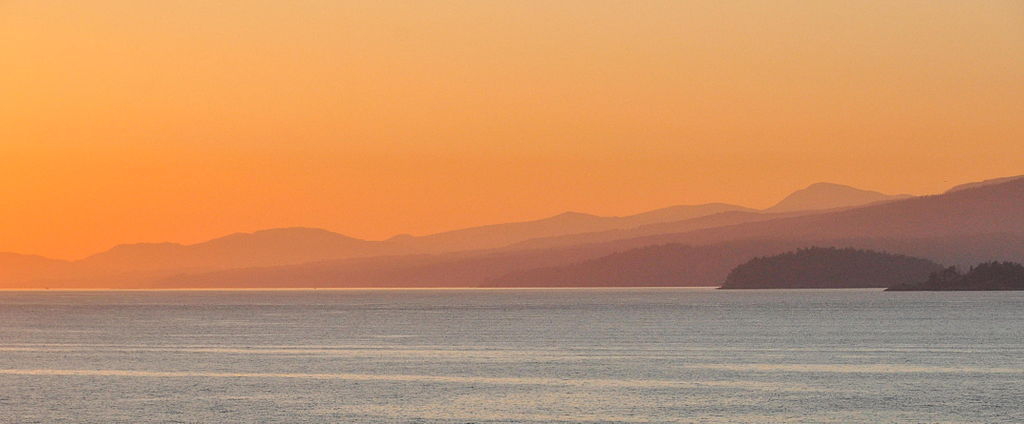
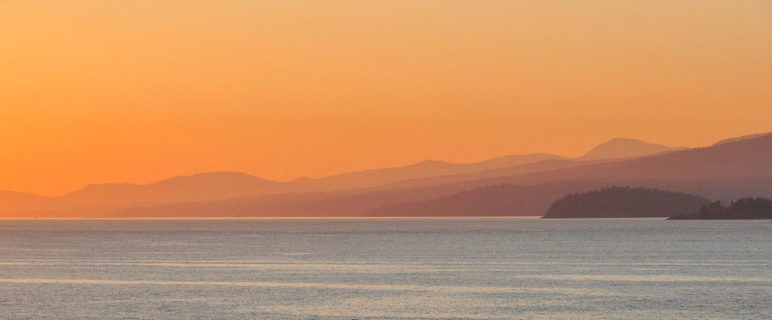


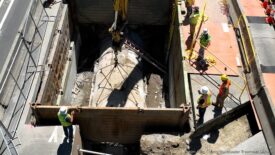
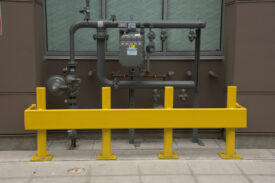
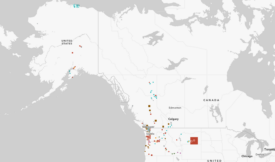
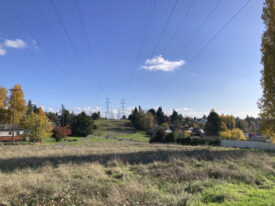
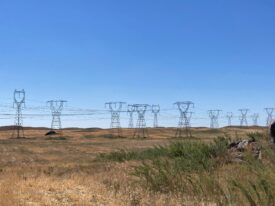

Harald Wolf
Thank you so much for picking up on the Cherry Point to Vancouver Island issue.
I’ve been looking for an ally across the border, because the BC gov’t is blind to all opposition from its own citizens.
You are headed in the right direction, but I think you are still missing the heart of the matter.
Since Spectra carries the bulk of BC gas from the fields in the northeast, why are they not involved in this minor extension to the coast? I’m convinced that this is a Williams initiative, specifically designed to circumvent the LNG project rejections they’ve received from US regulators – that this is about exporting US gas from their mid-western US fracking sites. I’ve looked at the maps in detail, and the Island Connector pipeline connects to their system several miles south of the border.
Steelhead is a sham – a front for Williams. They did not exist before this project, and claim they are funded by a small private venture capitalist in Calgary, utterly incapable of funding, let alone conceiving a massive project like this.
There is absolutely no economic scenario that makes sense in building a pipeline under the sea to a floating facility on Vancouver Island, where there is no energy to spare for the liquefaction (so they’ll have to burn their own gas to do so) and in a residential/recreational and environmentally sensitive inlet.
My conclusion is that Williams is hoping to get the pipeline approved, and then sit on it until the economics for LNG improve, and then they will have NAFTA protection of their investment and profits (investor-state clauses).
Sharon Monteiro
Thanks so much for getting this together and out there. Just got them out of Southern Oregon and now they are here, as they have been all along. Just amazing how the Great Pacific Northwest is targeted for all these fossil fuel export facilites. Like the largest oil pirt in Vancouver, WA and the largest coal terminal in Longview, Wa. But, LNG is major bad nasty. We chased them out of Rhode Island, at two proposed sites. As to the Oregon effort, it was the inland Southern Oregon pipeline easement property owners who organized and opposed who finally helped turn the tide. Concerning the Olympic Pipeline disaster in B’Ham in 1999, today, June 10th marks 17 years since it happened. The boys would have been about 26, out of college and perhaps with families. Liam would have been a man of 35 and who knows were his life’s spirit would have taken him. These three young males were murdered for a fuel pipeline. Lets not let anymore be taken.
Craig Moddle
A spot on article! And Harald is right on all his added points. Aside from the various and many concerns mentioned above though, is the huge unanswered question regarding what is the success/safety rate of other floating plants around the world. Guess what, there is only one under actual construction that I can find.
Virginia Pollock
Thank you for this important information. The citizens of Vancouver Island are overwhelmingly against this plan. LNG would change the face of this Island gem. Fracking, factories, piplines and huge industrial ships are a horror story for us. Those Off Islanders intend to take over and make money with absolutely no care for us. This must be stopped. Perhaps Vancouver Island should be declared an environmentally protected area.
Liz Newton
One has to wonder where in their planning they account for the potential risks posed by the recently discovered fault line in the Salish Sea. This is a fault line which no one knows enough about to be able to say what it might do.